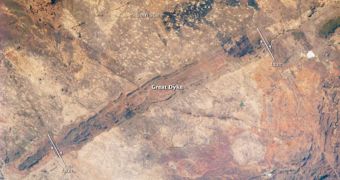Scientists have for a long time been puzzled by the existence of the Great Dyke of Zimbabwe, which is arguably one of the most peculiar and interesting rock formations on the surface of the planet.
According to experts, the Dyke is in essence a linear geological feature that shouldn't be there. It is located at the very core of the African craton, the oldest rock core that makes up the entire continent.
Over millions of years, cratons around the world are reshaped, eroded, fragmented and merged together by the massive tectonic forces that push the Earth's crust above an ocean of liquid magma called the mantle.
These motions are too slow to be observed with the unaided eye, but geological tell-tale sings exist to point geologists in the right direction, Our Amazing Planet reports.
The most widely-accepted model of Earth's interior says that motions of the planet's solid iron core is causing the mantle to be stirred, which in turns drives the motion of tectonic plates that make up the crust.
This activity is producing numerous side-effects, such as for example earthquakes, volcanic eruptions and tsunamis, which usually originate in the places where two tectonic plates meet.
A similar type of activity is believed to be responsible for the creation of the Great Dyke of Zimbabwe, which began some 2.5 billion years ago. The formation is inserted in even older rocks.
The formation follows a north-to-south orientation through the African nation, passing just miles to the west of the capital city of Harare. Its length was measured to be 550 kilometers (340 miles).
An interesting aspect of this rock inclusion is that it contains vast reserves of varied ores, including among others gold, silver, chromium, platinum, nickel and asbestos.
Geologists believe that the Dyke was formed slowly, most likely over millions of years, by magma that was pushing its way from the mantle through the craton. Basically, it is an infiltration.
Formations such as this one can be found elsewhere in the world as well, but none of them is so extended. The Dyke varies between 3 and 12 kilometers in width.
Due to its placement and the fact that it is rich in ore, it is currently being actively mined to support the crumbling economy of Zimbabwe, which is severely affected by poverty.

 14 DAY TRIAL //
14 DAY TRIAL //